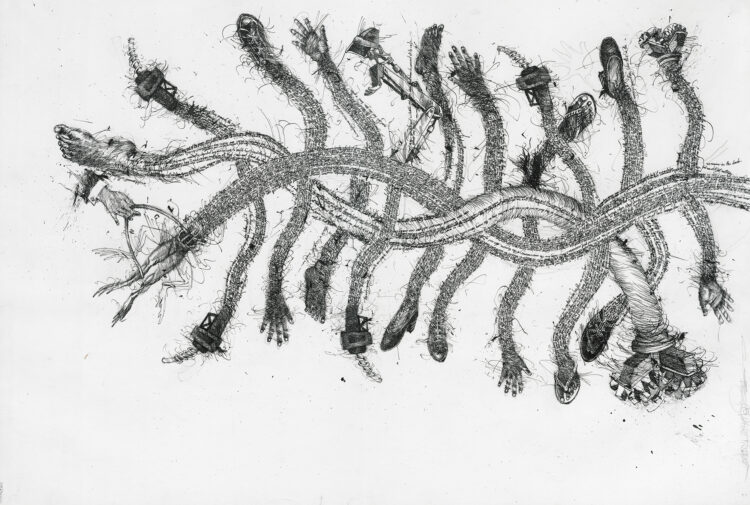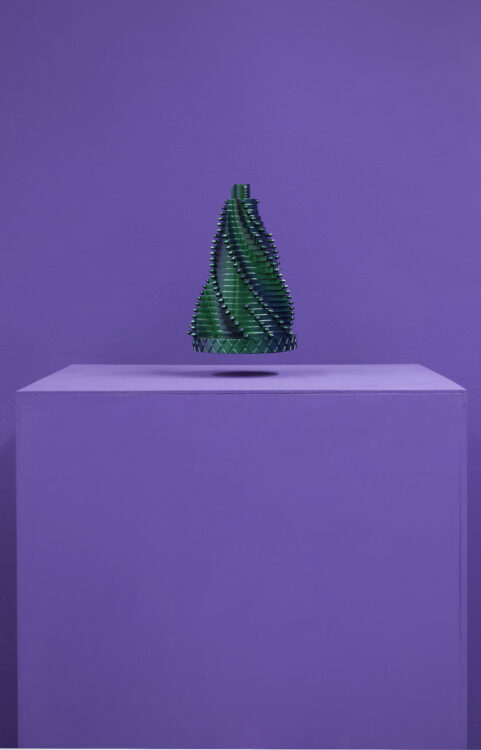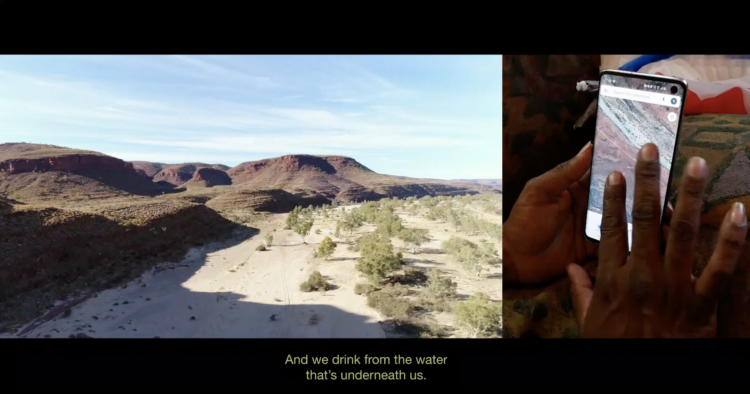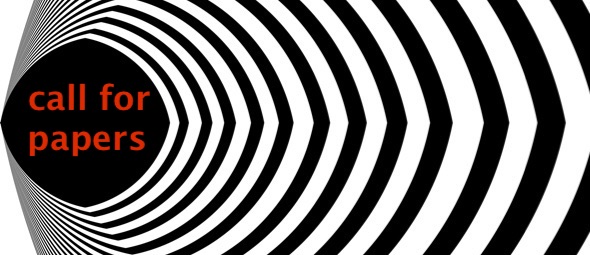Guest Editors: Helga Nyman and Anne Szefer Karlsen
Deadline for proposals: Closed.
The extraction and use of crude oil and natural gas has fundamentally transformed our societies and the ways we have lived over the past 150 years. As a both visible and invisible agent, oil continues to shape individual experiences and national identities, propelling conflict and creating disparate economic opportunities.
Throughout the twentieth century, the intensified extraction of oil and later gas, led certain nation states to rely heavily on the income generated through their petro-economy, either directly or through heavy taxation. The spaces of extraction vary from deep ocean beds to deserts; from densely populated, urban sites, to sparsely inhabited but intimately managed Indigenous territories like those where hydraulic fracturing of geological formations are located. Overall, the moment of discovery and extraction is tethered to technological development, energy depletion, and consumption. Perhaps more importantly, those historical discoveries of oil are catalysts that translate into politics, such as fights for independence, or a tighter grip of colonisation. Thus, spatial characteristics and historical circumstances varies widely. Nevertheless, the editorial proposition is that there is a level of recognition between those that intimately inhabit petrostates.

In this issue of Kunstlicht, you are invited to investigate the (parallel or displaced in time) relations between, and experiences of, oil nations, or petrostates, if you will. These are countries that are marinating in resources, but also deeply entrenched and engaged in resource conflicts and wars. Those who live on and support themselves off the lands and oceans are directly impacted by this industry and consequently its economy and politics.
Of cultural expressions dealing with the extraction economy and its effects, it is those concerning ecological perspectives that have gained the most traction in academia and mainstream media. The research field of environmental humanities, and specifically “petrocultures”, has directed cross-disciplinary academic attention towards the implications of oil on individuals and societies. Founded in art, art histories, curatorial practices, visual cultures, and architecture, this edition of Kunstlicht will investigate the lived experiences of those that have lived through – even shaped – the present, traced through personal histories, archival analyses, and artistic work.

Kuwaiti artist Monira al Qadiri is one among several artists who have influenced the thinking underpinning this issue. In her levitating sculpture series OR-BIT (2016) she creates tension between two historical eras by linking the iridescent surface of oil to the surface of pearls (which was a financially important industry in the region before oil). Replicating drill heads, these models are reminiscent of the spectacular architecture of the GCC region and the tower of Babel, now drilling into the sky. Another is Marianne Heier’s site-specific work Saganatt (Saga Night, 2008). Using the ubiquitous petroleum-derived product of regular asphalt, she coats a section of a gravel road snaking between the residential houses in the open-air museum of Maihaugen, Norway. The houses represent the national narrative of architecture history, and the asphalt appears when oil was discovered in Norway on this physical timeline. Through this work, she reveals a national narrative void of any direct reference to the tectonic financial shift resulting from the discovery and nationalisation of oil. Since 2013, artist Rachel O’Reilly has worked on a suite of works titled The Gas Imaginary. She tracks the birth of the US-led ‘unconventional’ gas (fracking) industry in Australia through her hometown of Gladstone on Gooreng Gooreng land, formatted entirely by logics of colonial modernism. Further complicating social and economic relations in petro-locations, these works emphasise the complex relationship between oil and the historical shifts that follow.

We are looking for socio-spatial interconnectedness, where experiences of narratives, architecture, visual art, literature, social expressions, bodily and other archives, economy, ecology are translated and interpreted to investigate heroism, infrastructures, practices, responses, and traumas related to extraction, politics of experiences, the effects of colonisation, neo-colonisation, and settler colonisation. The editors of this issue invite you to investigate comparative or displaced relations and experiences of oil nations through cultural expressions pertaining to the landscapes, personal and national, that oil has forged.
We invite contributions rooted in art, art history, visual culture, and architecture, and encourage queer, feminist, activist, and speculative approaches. We also welcome proposals for image or text based artistic contributions.
This issue of of Kunstlicht’s editorial platform is inspired by the conference Experiences of Oil (22–24 November 2020), and will follow lines of inquiry opened up by a network of artists, anthropologists, filmmakers, art historians and scholars of other fields convened by the curators of the conference, Helga Nyman and Anne Szefer Karlsen, who also serve as guest editors.
Proposals (200-300 words) with attached résumés and proposed image material can be submitted until 18 April 2021 via redactie@tijdschriftkunstlicht.nl. Selected authors and artists will be invited to write a 2,000 to 3,000-word paper (excluding notes) or submit an artistic contribution. Authors who publish in Kunstlicht will receive three complimentary copies. Kunstlicht is a volunteer-run academic journal and is not able to provide an author’s honorarium. Two years following publication, papers will be submitted to the freely accessible online archive.
Helga Nyman is an art historian and curator at Stavanger Art Museum, Norway.
Anne Szefer Karlsen is a curator, writer, editor and Professor of Curatorial Practice, currently programme director for MA Curatorial Practice at the Faculty of Fine Art, Music and Design, University of Bergen, Norway.
Kunstlicht is a volunteer-run academic journal for visual art, visual culture, and architecture, founded in 1980. It is affiliated with the Arts & Culture department of the Vrije Universiteit Amsterdam but operates from an independent foundation. Kunstlicht is published three times a year and features both scholarly and artistic contributions.

